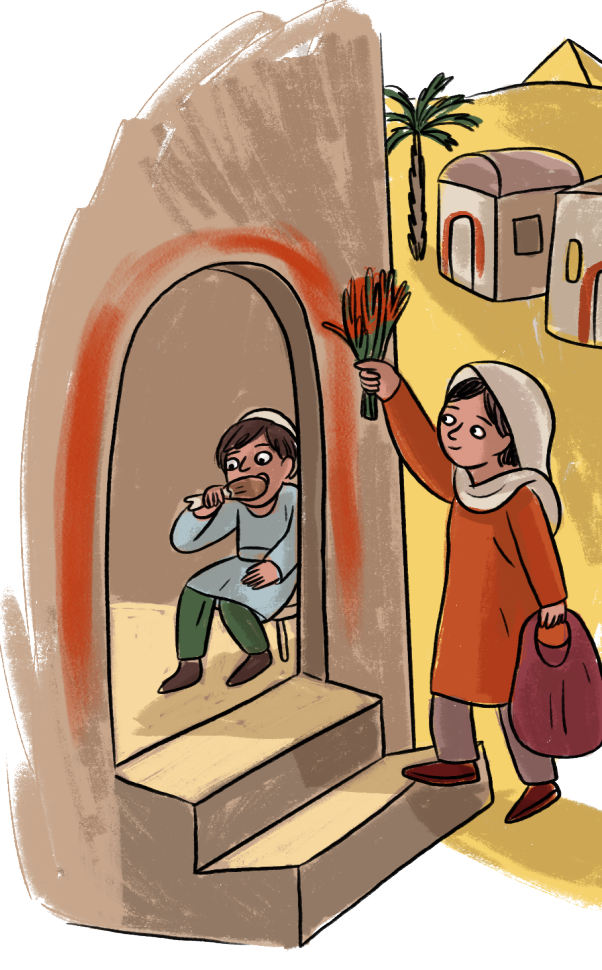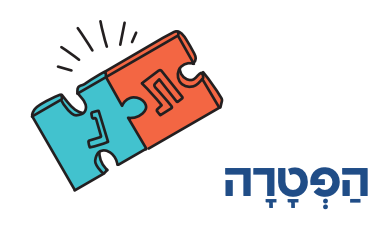Illustration credit: Noa Kelner

Haftarah הַפְטָרָה
This Shabbat, the final Shabbat of the month of Adar, is called Shabbat Ha-Hodesh.
We read a maftir that opens with the word הַחֹדֶשׁ (ha-hodesh, this month). It’s talking about the month that’s coming up, Nisan, and the message is: Get your קָרְבָּן פֶּסַח (korban pesah, pesah sacrifice) ready! Pesah is soon!
The maftir talks about the korban pesah that Benei Yisrael offered on the night before they left slavery, sometimes called פֶּסַח מִצְרַיִם (pesah Mitzrayim, Passover in Egypt). It also talks about the korban pesah that was offered in later years, sometimes called פֶּסַח דּוֹרוֹת (pesah dorot, Passover for generations).
- In the maftir, can you tell which rules about the korban pesah apply just to pesah Mitzrayim, and which apply to both pesah mitzrayim and pesah dorot?

One big difference between pesah Mitzrayim and pesah dorot is the requirement to smear the blood of the sacrifice on the doorposts. This was only in Mitzrayim, on the night of the Exodus.
But in our haftarah, blood smearing comes up again! The נָבִיא (navi, prophet) Yehezkel talks about a time in the future when the בֵּית הַמִּקְדָּשׁ (Beit HaMikdash, Holy Temple) will be rebuilt, and the כֹּהֲנִים (kohanim, priests) will smear blood to prepare the Temple for Pesah:
כֹּה אָמַר ה' אֱלֹקִים בָּרִאשׁוֹן בְּאֶחָד לַחֹדֶשׁ תִּקַּח פַּר בֶּן בָּקָר תָּמִים וְחִטֵּאתָ אֶת הַמִּקְדָּשׁ׃
וְלָקַח הַכֹּהֵן מִדַּם הַחַטָּאת וְנָתַן אֶל מְזוּזַת הַבַּיִת וְאֶל אַרְבַּע פִּנּוֹת הָעֲזָרָה לַמִּזְבֵּחַ וְעַל מְזוּזַת שַׁעַר הֶחָצֵר הַפְּנִימִית׃
Thus said God: On the first day of the first month, take a bull without blemish, and use it to purify the Mikdash.
The kohen (priest) should take some of the blood of this hattat sacrifice and place it on the doorposts of the House, and on the four corners of the ledge of the mizbe’ah (altar), and on the doorposts of the gate of the inner court.
- In Mitzrayim, what was the meaning of the blood on the doorposts? How is this blood similar to the blood that Yehezkel describes in the Beit HaMikdash of the future? How are they different?
-------------------
-------------------





